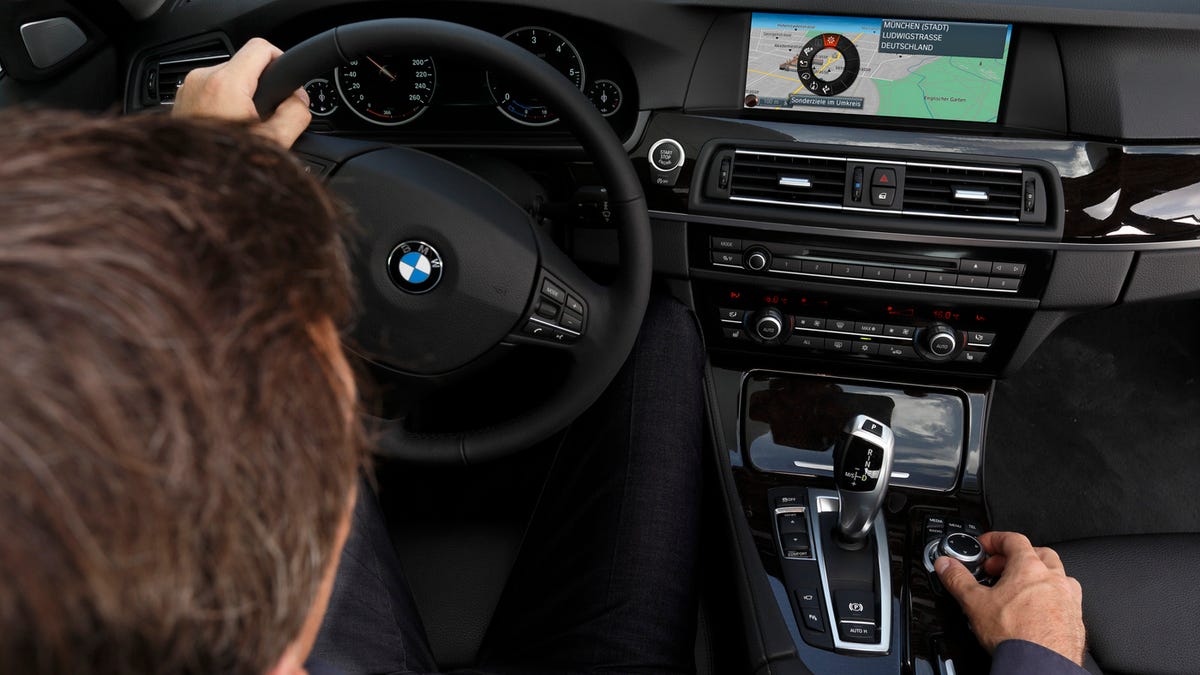BMW adding voice texting, 4G hot spot, new nav to cars
BMW announced a new generation of its cabin electronics today, encompassing a new navigation system, iDrive controller, voice command, and 4G LTE hot spot for its cars.

In recent years, BMW and Audi have emerged as technological juggernauts, pushing cutting-edge new cabin electronics in their cars. Today BMW announced a bundle of new features for its cars that trumps Audi in some ways, and plays catch-up in others.
The most obvious change we will see comes next year, with a new iDrive controller that BMW calls iDrive Touch. It uses the familiar dial/joystick hybrid on the console, and adds a touch pad to its top. With this touch pad, drivers can trace letters and numbers to input addresses into the navigation system. iDrive Touch also supports gestures for controlling the onscreen map. The driver can pinch to zoom or swipe to pan.
As nice as this new controller looks, Audi showed off a similar concept for the cabin of the new A3 at CES this year.
Click through for the full photo gallery and more details.One thing Audi does not have is BMW's new voice command system. Powered by Nuance, it lets the driver create text messages and e-mails on the fly by voice. This capability complements BMW's existing ability to receive text messages and e-mails, and read them out to the driver.
As demonstrated by BMW in an online conference, there also seem to be new natural language functions to the voice command system. For example, BMW showed a driver asking the car, "Are there traffic reports?" The car responded with the latest traffic information on the route.
That takes us to the navigation system, which gets a 200GB hard drive on which to store its maps, reserving 40GB for an onboard music library. BMW worked to improve the route guidance functions with something it calls High Guidance. This feature coordinates turn guidance between the dashboard LCD, the instrument cluster display, and the head-up display if optioned. The system provides more-detailed turn guidance graphics, which can be especially helpful in areas where multiple streets come together and odd angles. BMW says the system will tell the driver when to change lanes for an upcoming turn.
Related stories
Navigation incorporates a new traffic information system as well. Although BMW is sticking with Clear Channel and Inrix as its traffic data suppliers in the U.S., this data will come through a cellular data connection in the car, instead of the existing FM radio channel. BMW says the new data connection will lead to more-reliable traffic data.
BMW will also offer a new option to make the car a mobile Wi-Fi hot-spot. Its LTE adapter snaps into the center console, and connects to 4G networks. Working as a Wi-Fi hot spot, it lets passengers connect their devices and take advantage of 4G data speeds.
A new CPU and graphics processor in the dashboard supports the new systems, and let BMW refine the iDrive menu displays. These menus now have a 3D look, with submenus sliding into place when selected. BMW refined the look of the menu screens to make them more easily readable while driving.
BMW said its new iDrive Touch controller will launch in China first, then follow in world markets in 2013. The new navigation head units should come sooner in selective models. So far, BMW has had a good track record of upgrading cabin electronics in its models even in years in which it is not doing a major model update. If that tenet holds, then we should be seeing the new cabin electronics in some 2013 models, and most 2014 models.

